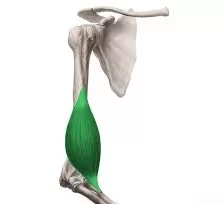10 Best Cervical Spine Pain Relief Exercises at Home
Table of Contents
Introduction:
A typical issue caused by bad posture, stress, prolonged desk job, or muscular strain is cervical spine pain, which is frequently felt as stiffness, tension, or pain in the neck and upper back. It may result in headaches, decreased mobility, and continual pain if not addressed.
Thankfully, easy exercises can help reduce strain on the cervical spine, increase flexibility, and strengthen neck muscles. The top ten cervical spine pain relief exercises that can be done at home without the need for specialized equipment are included in this article. These exercises support improved posture, mobility, and long-term neck health in addition to pain relief.
Benefits of the Top 10 Home Exercises for Cervical Spine Pain Relief:
Regularly performing cervical spine exercises at home has several immediate and long-term health advantages. These consist of:
- Pain relief: Mild stretching and strengthening activities ease shoulder and neck pain by reducing stiffness, nerve compression, and muscle strain.
- Increased Flexibility: Specific movements increase the cervical spine’s range of motion, which facilitates and eases daily activity.
- Improved Posture: By addressing rounded shoulders and forward head posture, exercises lessen the tension on the neck muscles.
- Stronger Upper Back and Neck Muscles: By strengthening the muscles that surround the cervical spine, you can reduce the likelihood of recurring pain.
- Decreased Headaches and Dizziness: Cervicogenic headaches and dizziness caused by stress are frequently alleviated by relaxing the muscles in the neck.
- Stress Reduction: Mild stretches encourage a relaxing impact on the neurological system, increase blood circulation, and loosen tense muscles.
- Preventing Future Issues: Consistent exercise keeps the spine in alignment, avoids stiffness, and lowers the chance of developing disc problems or chronic cervical spondylosis.
Top 10 Home Exercises for Cervical Spine Pain Relief:
Chin Tuck:
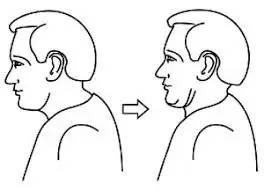
A straightforward yet incredibly powerful exercise for toning the deep neck flexor muscles and reversing forward head posture is the Chin Tuck. Without raising or lowering your head, gently draw your chin backward as though attempting to make a “double chin.” After a few seconds of holding the pose, release the tension.
This exercise relieves stress caused by extended sitting or screen time, helps correct the cervical spine, and eases strain on the neck and upper back muscles. Chin tucks can greatly improve posture, reduce neck pain, and increase spinal stability when performed regularly.
Neck Tilt:
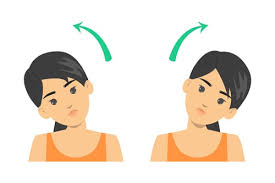
The Neck Tilt is a mild stretching technique that enhances cervical spine flexibility and relieves stress. Sit or stand with your shoulders relaxed and your back straight to execute it.
This exercise improves mobility, eases stiffness, and stretches the muscles on each side of the neck. Regular neck tilt practice helps reduce tension in the muscles, enhance posture, and alleviate neck pain caused by stress.
Neck Rotation:

The Neck Rotation exercise is a great way to improve cervical spine mobility and reduce stiffness. Maintaining your chin level with the floor, slowly tilt your head to one side as far as is comfortable.
Regular neck rotation exercises can increase flexibility, reduce neck stiffness, and ease stress from extended sitting.
Isometric Neck Extension:
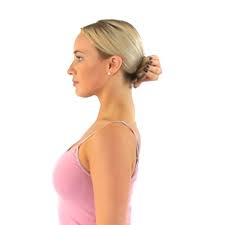
The Neck Extension Isometric exercise is a safe choice for those with cervical pain since it strengthens the muscles at the back of the neck without demanding real movement. Just above the neck, at the back of your head, place your palms or fingertips.
Make sure your head doesn’t move by gently pressing it backward into your hands as your hands oppose the movement with equal force. After holding the contraction for five to ten seconds, let go. This exercise improves posture, eases tension during everyday tasks, strengthens the neck extensor muscles, and stabilizes the cervical spine.
Isometric Neck Flexion:
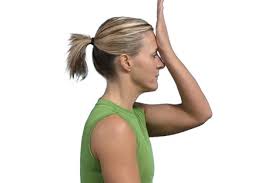
The Neck Flexion Isometric exercise increases cervical spine stability and strengthens the muscles at the front of the neck. Put your palm or fingers on your forehead, then gently push your head into your hand while maintaining the same level of resistance so that there is no real movement. In addition to correcting forward head posture and lowering the risk of neck strain and chronic pain, this exercise engages and develops the deep neck flexor muscles.
Side Press:
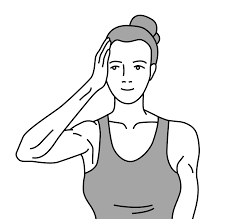
An excellent isometric exercise for strengthening the muscles on each side of the neck and enhancing the cervical spine’s lateral stability is the side press. Just above the ear, place your right palm against the right side of your head.
To ensure that there is no real movement, gently press your head sideways into your palm while using your hand to create equal resistance. This exercise improves support for keeping good posture throughout regular tasks, strengthens the neck, and lessens muscular imbalances.
Quadruped Banded Neck Extension:
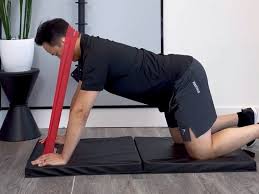
An exercise that strengthens the muscles in the back of the neck and increases the stability of the cervical spine is the quadrupod banded neck extension. To do this, place your hands behind your shoulders and your knees beneath your hips to form a quadrupod (all-fours) position. Secure the other end of a resistance band to a sturdy anchor at ground level in front of you after looping it around the back of your head.
Start with your chin slightly tucked in, then gently raise your neck against the band’s resistance before controlling your way back to the beginning position. Avoid arching your lower back and maintain an active core. In addition to improving posture and lowering the risk of neck pain from extended sitting or forward head posture, this exercise helps strengthen the neck extensors.
Cervical Rotation:
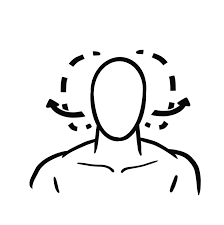
A mild exercise that improves neck mobility and decreases stiffness is cervical rotation. Keeping your chin level and without tilting your head up or down, slowly shift your head to one side as far as it feels comfortable.
This exercise increases blood circulation, improves range of motion, stretches the muscles surrounding the cervical spine, and eases stress caused by bad posture or extended desk labor. Cervical rotations can help maintain better neck function and avoid stiffness.
Shoulder Rolls:
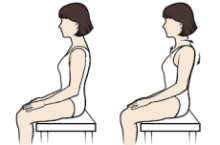
An easy yet powerful exercise for relieving stress in the neck, shoulders, and upper back is the shoulder roll. Sit or stand with your arms at your sides and your spine straight to complete it. After doing this a few times, roll forward to change the direction.
This workout increases blood flow, relaxes tense muscles, lessens stiffness from tension, and encourages improved posture. Regular shoulder roll practice can reduce shoulder stress, decrease neck pain, and promote the general health of the cervical spine.
Upper Trapezius Stretch:
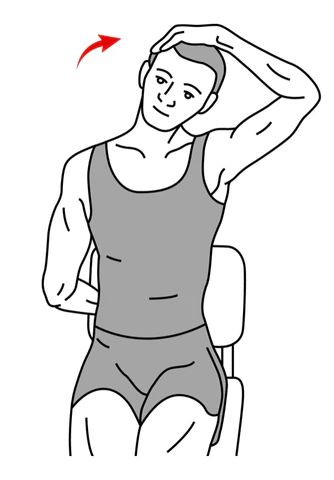
A good exercise for relieving stress and tightness in the muscles around the sides of the neck and shoulders is the Upper Trapezius Stretch. Put your hand on top of your head and gently press for a deeper stretch; do not pull too hard.
The opposing shoulder should remain down and relaxed. After 20 to 30 seconds of holding the stretch, go on to the opposite side. This stretch eases stiffness, eases neck pain from tension, and increases shoulder and cervical flexibility.
Conclusion:
A safe, all-natural, and efficient method of treating neck pain, stiffness, and postural problems is to perform the Top 10 Cervical Spine Pain Relief Exercises at Home. These exercises increase flexibility, stabilize the spine, and ease shoulder and neck muscular strain by fusing mild stretches with strengthening motions.
Regular practice not only eases current pain but also guards against future cervical issues caused by bad posture, stress, or sedentary lifestyles. These easy at-home exercises can significantly improve long-term neck health and general well-being if performed consistently and with the right form.
FAQs
The most typical initial symptom of individuals with a cervical spine tumor is neck pain. Patients frequently have nighttime and persistent pain that is not alleviated by rest or conventional therapies. Patients may have a reduced range of motion and stiff necks.
If your neck pain is severe, chronic, or comes with additional symptoms, you should be concerned. If you experience neck pain after an injury, especially a catastrophic one like a car accident or fall, get medical help right away. Additionally, you should see a doctor right away if you have a headache accompanied by nausea, vomiting, or light sensitivity, or if you feel numbness, tingling, weakness, or pain radiating down your arms or legs.
In the early stages, it is recommended to avoid strenuous activities such as heavy lifting and extended reaching with the affected arm. Additionally, since this can occasionally result in arm pain, you might want to avoid activities that require you to tilt your head laterally or rearward for lengthy periods.
It is advised to refrain from demanding tasks like heavy lifting and reaching too far with the affected arm in the early stages. Additionally, you might want to stay away from activities that require you to tilt your head laterally or backwards for extended periods, as this can occasionally cause arm pain.
Maintaining proper posture, adopting ergonomic furniture, taking regular breaks to stretch and exercise, avoiding neck-straining activities, and partaking in stress-relieving hobbies are all lifestyle modifications that are useful for cervical spondylosis.
The most severe signs of cervical spondylosis include weakness, numbness, and trouble walking, as well as pain that radiates to the hands and arms.
Cervical pain can be significantly reduced by consuming fewer foods and chemicals that induce inflammation. Saturated fats and arachidonic acids, which are frequently included in meat and dairy products, are two of the main sources of inflammation in the body. Inflammation can also result from eating dairy products high in fat.
When applied, Iodex Power Gel provides a calming, warm sensation and is non-greasy. It is a great option for those seeking immediate, focused relaxation from tense muscles.
The main causes of cervical pain, often known as neck pain, include age-related wear and tear (cervical spondylosis), whiplash injuries, poor posture, and muscular strain. Herniated discs, cervical spinal stenosis, and diseases including rheumatoid arthritis and osteoarthritis are additional important contributors.
Minor muscular strains from sleeping in an unusual position or spending too much time staring down at a phone can frequently create a stiff neck without any other symptoms. Home care frequently helps with this. However, a stiff neck following an accident (such as a fall) or in conjunction with a fever and headache may indicate a more serious condition.
You could find it difficult to move your neck, especially to one side, when it is uncomfortable. You may have numbness, tingling, or weakness in your arm, hand, or other areas if your neck pain is related to nerves.
Pregnancy may be impacted by cervical spondylosis, a disorder that causes stiffness and soreness in the neck as a result of age-related changes in the spine, although serious consequences are unlikely. Although the majority of women with cervical spondylosis may have safe pregnancies, some may have more back and neck pain because of the hormonal changes and extra weight that come with pregnancy. To control symptoms and guarantee a safe pregnancy, it’s important to address any worries with a healthcare professional.
Omega-3-rich fish include sardines, salmon, and tuna. fruits such as blueberries, cherries, pomegranates, and watermelon. Calcium and vitamin D-rich foods and supplements are also crucial since they lower inflammation and provide the proper nourishment for your bones.
Cold and hot treatment. Neck pain can be quickly relieved by using heating pads or ice packs. Heat soothes the tense neck muscles, while ice lessens inflammation. You can switch between the two multiple times a day for around 20 minutes each for optimal effects.
Give rest and mild movements a priority when helping a youngster who has neck pain. Use heat or ice packs, and if necessary, think about using over-the-counter painkillers. See a physician if the pain is severe, ongoing, or accompanied by further symptoms.
References:
- Editorial Team. (2023, November 22). Top 7 Best exercises for Cervical spondylosis to reduce pain. Heritage Hospitals. https://heritagehospitals.com/blog/exercises-for-cervical-spondylosis/
- Villines, Z. (2025, April 10). 10 exercises for a pinched nerve in the neck. https://www.medicalnewstoday.com/articles/326949
- Davis, N. (2024, March 13). 19 Exercises to relieve upper back pain, neck pain, and more. Healthline. https://www.healthline.com/health/fitness-exercise/upper-back-pain-exercises
- Performance, H. R. A. (2021, February 18). 5 Back and neck stretches to do every day. Hospital for Special Surgery. https://www.hss.edu/health-library/move-better/back-neck-stretches
- Neck stretches for pain relief: How to stretch your neck. (2024, June 30). WebMD. https://www.webmd.com/fitness-exercise/fitness-neck-stretches
- NHS inform. (2025a, February 6). Exercises to help with cervical spondylosis | NHS inform. NHS Inform. https://www.nhsinform.scot/illnesses-and-conditions/muscle-bone-and-joints/neck-and-back-problems-and-conditions/exercises-for-cervical-spondylosis
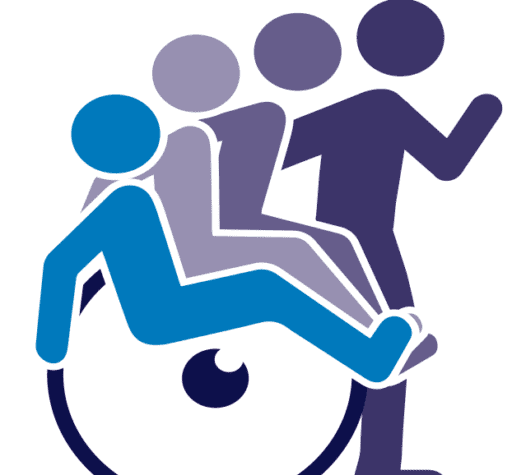
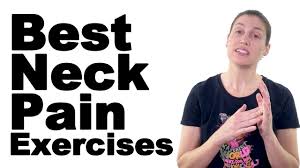


![Chair Poses [Utkatasana]](https://mobilephysiotherapyclinic.net/wp-content/uploads/2023/12/Chair-PosesUtkatasana.webp)

